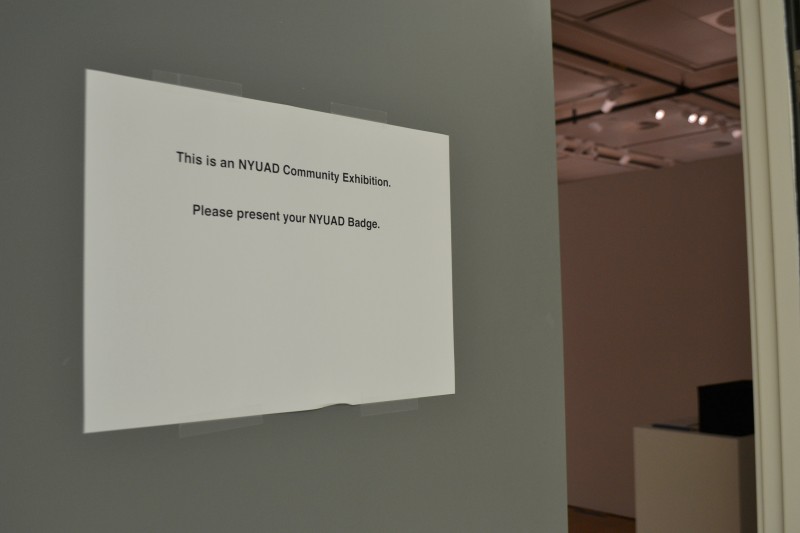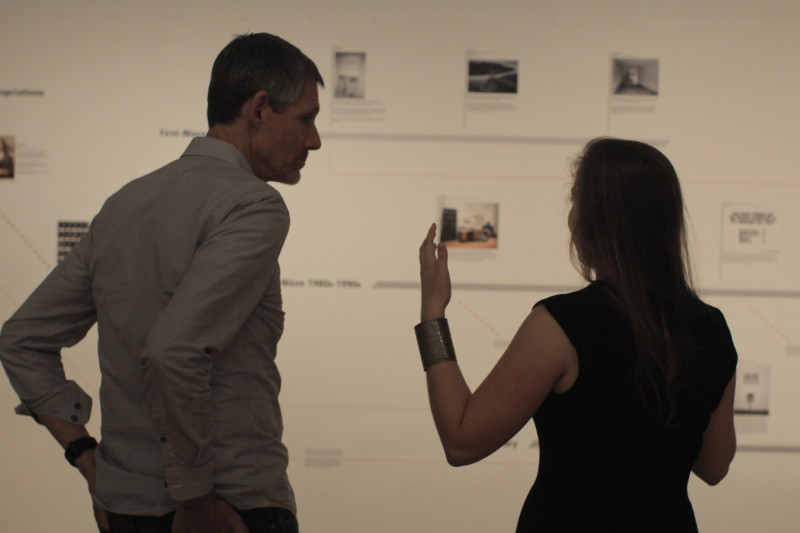Logbook #22
Observations: Instutional Constraints + Visitor’s Responses
On the second day the exhibition was open, a guest of the music program, here with for a conference was informed that he could not enter without an NYU ID. He was rather obstinate and would not move from the door for a while, peering in and gesturing towards me when speaking to the staff member outside. I decided to go talk to him to try and explain further. When it was explained that this was not our decision, that this was a student project and this rule was one we had to follow, he wanted to know who’s decision it was and why there was such a decision. He then mentioned he was with the music program and I offered to explain to his hosts who they could contact about this decision (Judith Miller). He mentioned that he had seen posters around campus and had found them misleading, as it was not advertised as private on the advertising for the event. It was in moments like these that I saw the benefit of having a staff member outside to enforce the rule set it place- I felt very uncomfortable having to turn people away, and it was easier to have someone ask for IDs for me.
Visitors would sometimes ask me why there was there was a table set up outside, and why the restrictions with IDs; these protective mechanisms put in place by the institution were themselves very performative. Justin Stearns, told me that he was quite disappointed about the institutions’ reactions, explaining that he would have brought his guest lecturer whose topic was in fact very related to issue of including Gulf Labor. In a conversation with him about navigating the topic of labor and the display of 52 Weeks in my exhibition and the decision to restrict entry to the space, Justin Stearns phrased it well, saying that “the exclusion itself becomes a performance.” Both he and Bryan Waterman separately suggested that I organize some sort of talk-back or Q&A session.
I considered this seriously, especially because earlier on I had been mentioning that I wanted the audience to feel they had agency and a voice/a way to respond to the Gulf Labor in which we are so implicated. An idea Hanan Sayed Worrell, a Guggenheim senior representative in Abu Dhabi and my mentor through the Women’s Mentorship Program, gave to me when I shared with her the updates about administration’s concerns was to host a panel to discuss Gulf Labor’s work. This would be a way to promote discourse about the work and make it clear that putting their work up on the walls does not mean that the institution is in support of the work, but rather that it is valuable to stimulate discussions. The more I thought about it, however, a panel or talk-back/ Q&A that was directly related to the labor issue would end up doing what I had been trying to avoid from the start; it would make the exhibition all about labor. By highlighting or focusing on the issue, visitors would end up losing sight of the larger theme of my exhibition. After speaking about this with my mentors, I decided to do a curatorial walkthrough- this way people could answer any questions, and the framework of the entire exhibition would be the focus. Throughout the week, I had been giving informal ones, but going through a more official walkthrough felt very different. There were only five people, but still I was terribly nervous, and having one of my mentors there certainly added the pressure. I understand now why so many artists are bad at talking about their own work. It was very hard to speak about my curatorial work, it is quite a vulnerable position.
| Posted in Curatorial Process No Comments;

